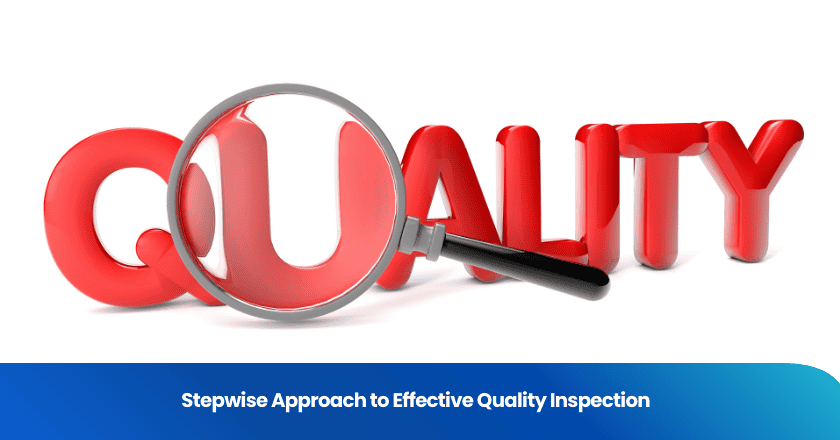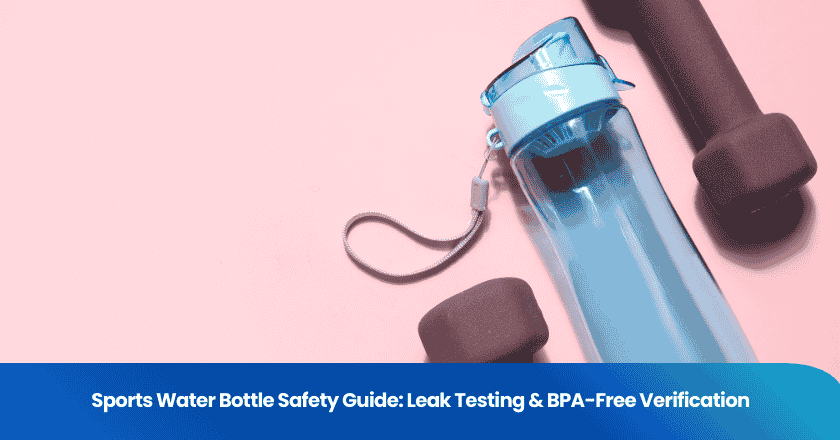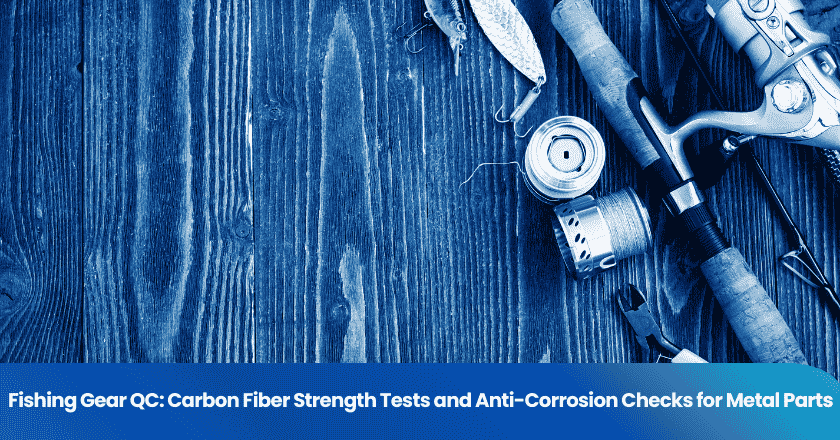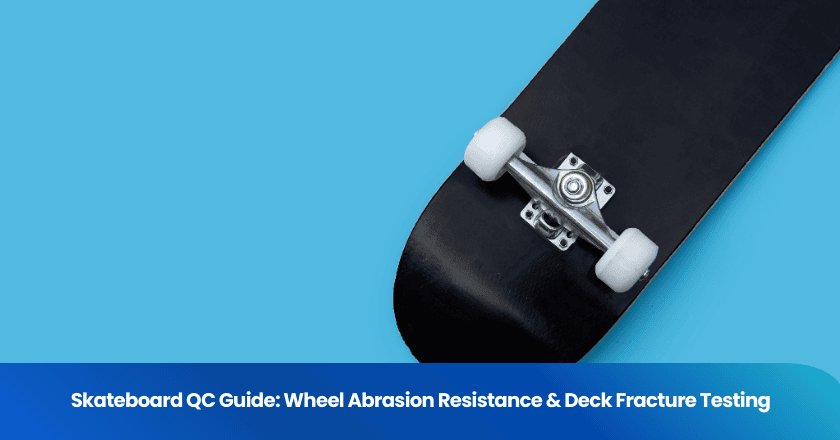
You want to know the exact steps for an effective quality inspection. A systematic approach gives you reliable results every time. When you understand what is quality inspection, you set the foundation for consistency. You need to follow a clear process to improve your outcomes. Reflect on your current quality inspection methods. Consider how a stepwise approach can raise your standards and boost confidence in your results.
Key Takeaways
- Follow a clear, step-by-step quality inspection process to ensure consistent and reliable results.
- Set clear standards and use detailed checklists to guide inspections and catch defects early.
- Use sampling methods like AQL to inspect representative products efficiently without checking every item.
- Document all findings carefully and classify defects to prioritize fixes and improve product quality.
- Regularly review and update your inspection procedures and train your team to maintain high standards.
What Is Quality Inspection
Purpose and Importance
You need to understand what is quality inspection before you can improve your processes. This step forms the backbone of any manufacturing or service operation. When you ask what is quality inspection, you look for a systematic process that checks if products meet defined standards. You use this process to ensure product quality and reduce the risk of defects reaching customers.
Quality inspection helps you catch issues early. You can prevent costly recalls and protect your reputation. When you focus on what is quality inspection, you create a culture of accountability and continuous improvement.
You also support quality assurance by verifying that each item meets your requirements. This approach builds trust with your clients and helps you maintain compliance with industry regulations.
Key Concepts
You should know the main ideas behind what is quality inspection. These concepts guide your daily activities and long-term strategies.
- Inspection Criteria: You set clear benchmarks for product quality. These criteria help you decide if an item passes or fails.
- Sampling: You do not need to check every single product. Instead, you select samples that represent the whole batch.
- Defect Classification: You categorize issues based on severity. This step helps you prioritize corrective actions.
- Documentation: You record your findings. This record supports traceability and future analysis.
When you understand what is quality inspection, you can identify weak points in your process. You use this knowledge to improve product quality and reduce waste. A strong quality inspection system gives you confidence in your results and helps you deliver consistent value.
Preparation
Define Standards and Objectives
You must start your garment inspection procedure by setting clear standards and objectives. These standards should align with your organizational goals. When you define what quality means for your garment, you create a foundation for every quality inspection. Set measurable targets for fabric strength, colorfastness, stitching, and fit. Use these targets to guide your team. You need to specify acceptance criteria for each garment type. This step ensures everyone understands what passes or fails during the quality inspection.
Understand Specifications
You need to study the specifications for each garment before you begin. Review technical packs, drawings, and client requirements. Pay close attention to specifying tolerances for garment dimensions. This detail helps you decide if a garment meets the required size and shape. You should also check the materials used. Conduct a raw material inspection to confirm fabric quality, trims, and accessories. Understanding these details helps you catch problems early and avoid costly mistakes.
Create Inspection Checklist
You must develop a quality inspection checklist tailored to your garment. List every point you need to check, such as seams, labels, measurements, and finishing. An effective qc inspection checklist covers all possible defects and matches your acceptance criteria. Use the quality inspection checklist at every stage of production. This habit ensures you do not miss any critical step. For best results, update your quality inspection checklist regularly. Include feedback from previous inspections to improve your process. An effective qc inspection checklist helps you maintain high standards and deliver consistent results. When you use a detailed quality inspection checklist, you make your garment inspection procedure more reliable and efficient.
Standard Inspection Procedure
Inspection Stages
You must follow a standard inspection procedure to ensure consistent results in your quality inspection. This approach divides the inspection process into three main stages. Each stage plays a vital role in your quality control plan.
You start the standard inspection procedure before production begins. You check raw materials, components, and equipment. This step helps you confirm that everything meets your quality control plan requirements. You prevent defects before they enter the production line.
2. During Production Inspection
You continue the standard inspection procedure as production progresses. You select samples and check them at different points. You use your quality control plan to guide your inspection process. You identify issues early and make corrections to avoid large-scale defects.
You finish the standard inspection procedure with a thorough check of finished goods. You compare products to your quality control plan benchmarks. You ensure that only items meeting your standards move forward.
Tip: Use a quality control plan example to visualize each stage of your standard inspection procedure. This helps you align your inspection process with best practices.
Roles and Responsibilities
You need clear roles and responsibilities in your standard inspection procedure. Your quality control plan defines who does what at each stage. You assign tasks to quality control inspectors, supervisors, and team members.
- Quality Control Inspectors
You rely on these professionals to carry out the standard inspection procedure. They follow your quality control plan and document findings.
- Supervisors
You task supervisors with overseeing the inspection process. They ensure that procedures match your quality control plan.
- Team Members
You involve production staff in the standard inspection procedure. They support the quality control process by following procedures and reporting issues.
You map workflows and benchmarks in your quality control plan. You update procedures as needed to improve your standard inspection procedure. You create a feedback loop to refine your quality control process over time.
Step-by-Step Process
A step-by-step process ensures you achieve reliable results in every quality inspection. You need to follow a thorough inspection process to maintain high standards for each garment. This section guides you through the essential inspection methods for effective product inspections.
Sampling Methods
You cannot inspect every single garment in a large batch. Instead, you select representative samples using standardized inspection methods. Start by determining the sample size based on the total production quantity. Use industry-accepted sampling plans, such as AQL (Acceptable Quality Level), to decide how many garments to check. This approach helps you balance efficiency and accuracy during product inspections.
- Choose samples randomly from different parts of the batch.
- Ensure each sample reflects the variety in color, size, and style.
- Document your sampling method for traceability.
Tip: Consistent sampling methods help you identify trends and recurring issues in your garments.
By following a step-by-step process for sampling, you increase the chances of detecting defects early. This practice supports a thorough inspection process and reduces the risk of faulty garments reaching customers.
Visual and Functional Checks
Visual and functional checks form the core of any quality inspection. You need to examine each garment for visible defects and test its basic functions. Begin by checking the overall appearance. Look for stains, color inconsistencies, and fabric flaws. Inspect seams, hems, and stitching for uniformity and strength.
- Check labels, buttons, zippers, and trims for correct placement and attachment.
- Examine the garment for loose threads, holes, or unfinished edges.
- Assess the fit by conducting a fitting test on mannequins or live models.
Functional checks go beyond appearance. You must test zippers, snaps, and fasteners to ensure they work smoothly. Pull and stretch the garment gently to check for durability. Evaluate the fit by comparing the garment to standard body measurements and conducting a fitting test. This step confirms that the garment meets customer expectations for comfort and style.
Note: A thorough inspection process includes both visual and functional checks to guarantee the garment's quality and fit.
Measurements and Testing
Measuring garment dimensions is a critical part of the final inspection and testing phase. You need to use precise tools, such as measuring tapes and rulers, to check key points on each garment. Record measurements for chest, waist, hips, sleeve length, and inseam. Compare these numbers to the approved specifications.
l Use a measurement table to organize your findings:
| Measurement Point | Specification | Actual Measurement | Pass/Fail |
| Chest | 40 in | 40.2 in | Pass |
| Waist | 32 in | 31.8 in | Pass |
| Sleeve Length | 25 in | 25.1 in | Pass |
l Check the garment's stretch and recovery if it contains elastic materials.
l Test colorfastness by rubbing or washing a sample area.
l Confirm that the garment maintains its shape and fit after testing.
Measuring garment dimensions ensures that each piece meets the required standards. You need to repeat these steps for every sample in your product inspections. This step-by-step process helps you identify any deviations and take corrective action before shipping.
Remember: Accurate measurements and testing are essential inspection methods for delivering high-quality garments that fit well and perform as expected.
Documentation
Record Findings
You need to document every step of your quality inspection. Accurate records help you track the performance of each garment and identify patterns over time. Start by using your quality inspection checklist to note the results for every sample. Write down the measurements, visual observations, and outcomes of each check. Include details such as stitching quality, seam alignment, and fabric appearance. Use a table to organize your findings for each garment:
| Garment ID | Measurement | Visual Check | Functional Check | Label Verification | Result |
|---|---|---|---|---|---|
| 001 | Pass | Pass | Pass | Pass | Pass |
| 002 | Fail | Pass | Fail | Pass | Fail |
You should update your records after every inspection. This habit ensures you have reliable data for future reference. If you find recurring issues, you can adjust your quality inspection checklist to address them. Consistent documentation supports continuous improvement in your garment inspection process.
Tip: Use digital tools to store and analyze your inspection data. This practice makes it easier to share results with your team and spot trends quickly.
Classify Defects
You must classify defects to prioritize corrective actions. During your quality inspection, use the quality inspection checklist to categorize each issue found in a garment. Common defect types include critical, major, and minor. Critical defects affect safety or usability. Major defects impact appearance or function but do not pose safety risks. Minor defects are small imperfections that do not affect performance.
- Critical: Broken seams, missing labels, or incorrect sizing.
- Major: Uneven stitching, color mismatch, or faulty zippers.
- Minor: Loose threads, small stains, or slight misalignment.
You should record the defect type for every garment you check. This step helps you decide which garments need rework or rejection. Include label verification as part of your defect classification. If a label is missing or incorrect, mark it as a critical defect. By classifying defects, you improve the effectiveness of your quality inspection checklist and ensure only high-quality garments reach your customers.
Reporting
Summarize Results
You need to present your findings clearly after each quality inspection. Start by organizing your data into a summary report. Use tables to display the number of inspected items, defect types, and pass/fail rates. This approach helps you and your team see patterns and identify problem areas quickly.
| Batch No. | Inspected | Passed | Failed | Critical Defects | Major Defects | Minor Defects |
|---|---|---|---|---|---|---|
| 101 | 50 | 47 | 3 | 1 | 1 | 1 |
| 102 | 60 | 58 | 2 | 0 | 2 | 0 |
You should include a brief narrative that highlights key findings. Point out any recurring defects or improvements compared to previous inspections. This summary gives your team a clear overview and supports decision-making.
Tip: Use visual aids like charts or graphs to make your summary more accessible for everyone on your team.
Recommend Actions
You must provide actionable recommendations based on your quality inspection results. List specific steps for addressing critical and major defects. For example, suggest reworking failed items, adjusting production processes, or retraining staff. Assign responsibilities to team members so everyone knows their role in the improvement process.
- Rework garments with critical defects immediately.
- Review production steps that led to major defects.
- Update training materials to address common issues.
- Schedule follow-up inspections to verify improvements.
You should also recommend preventive measures to avoid similar problems in the future. Encourage your team to share feedback and suggest ideas for process improvement. When you act on your quality inspection findings, you strengthen your quality management system and deliver better products to your customers.
Quality Inspection Procedures for Improvement
Review and Update
You need to treat your quality inspection procedures as living documents. Regular review helps you keep these procedures relevant and effective. Start by scheduling periodic audits of your quality inspection procedures. During each audit, compare your current practices with industry standards and client expectations. Identify any gaps or outdated steps. Update your procedures to reflect new regulations, technologies, or feedback from recent inspections.
Continuous improvement forms the backbone of strong quality assurance. When you update your quality inspection procedures, you reduce errors and improve consistency.
Encourage your team to share suggestions for improvement. Collect feedback after each inspection cycle. Use this input to refine your procedures and address recurring issues. By making review and update a routine, you ensure your quality inspection procedures always support your goals.
Training and Communication
You cannot achieve effective quality inspection procedures without proper training. Train every team member on the latest procedures and inspection techniques. Use hands-on demonstrations, visual aids, and clear instructions. Make sure everyone understands their role in the quality inspection procedures.
Open communication keeps your team aligned. Hold regular meetings to discuss inspection results and share lessons learned. Create a feedback loop where inspectors can report challenges and suggest solutions. This approach helps you catch problems early and adapt your procedures quickly.
- Provide refresher courses when you update your quality inspection procedures.
- Use checklists and quick-reference guides to reinforce best practices.
- Celebrate improvements and recognize team contributions.
When you invest in training and communication, you build a culture of accountability. Your team becomes more confident and skilled, which leads to better inspection outcomes and stronger quality assurance.
You strengthen your results when you follow a standard inspection procedure for every garment. You build consistency by using a quality control plan that covers each inspection stage. You improve reliability when you update your quality control plan and adapt your standard inspection procedure. You protect your garment quality by reviewing your quality control plan regularly. You empower your team to deliver better garments with a clear quality control plan. You create lasting improvement when you share your experiences or questions about your standard inspection procedure and garment inspections.
FAQ
What is the main goal of a quality inspection?
You use quality inspection to make sure products meet set standards. This process helps you catch defects early. You protect your reputation and deliver reliable results to your customers.
How often should you review your inspection procedures?
You should review your inspection procedures regularly. Schedule audits at least once a year. Update your process when you find new issues or when standards change.
What tools help you document inspection results?
You can use checklists, tables, and digital forms. These tools help you organize findings and track trends. Digital records make sharing and analysis easier for your team.
Why is defect classification important?
Defect classification helps you decide which issues need urgent action. You can focus on fixing critical problems first. This step improves your product quality and reduces customer complaints.
How do you choose the right sampling method?
You select a sampling method based on batch size and industry standards. Use random sampling to get a fair representation. Follow guidelines like AQL to balance accuracy and efficiency.
Grow your business with TradeAider Service
Click the button below to directly enter the TradeAider Service System. The simple steps from booking and payment to receiving reports are easy to operate.



